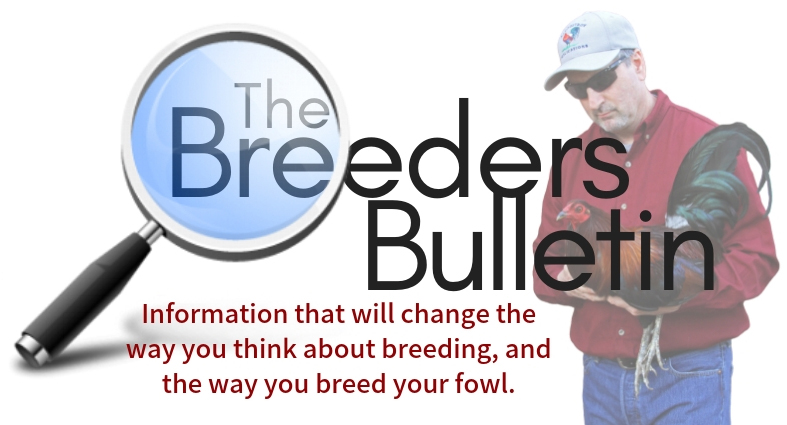 Many years ago, I purchased a trio of Lacy Roundheads from a popular and well-known breeder. They were Black Breasted Light-Reds with wheaten hens. They had white legs and were pea combed. They looked great, and I was very excited to start breeding and get some chicks.
Many years ago, I purchased a trio of Lacy Roundheads from a popular and well-known breeder. They were Black Breasted Light-Reds with wheaten hens. They had white legs and were pea combed. They looked great, and I was very excited to start breeding and get some chicks.
Interesting thing happened. When I bred the original trio, the offspring expressed many variations and were not uniform. Their tails were small and held low to the ground. I got large birds, small birds. I got high stationed birds and low stationed birds. They were of multiple colors, both in leg color and plumage. And, they expressed both pea combs and straight combs. They did not resemble the parents. In time, they began to look more Aseels than American Games. Needless to say, I was very disappointed and dissatisfied.
If you were to look at the parents, you would never know there was a problem. In this case, the offspring showed me the traits the parents carried, and showed me they were not only crosses, but that the cock and hens were unrelated. I was told this was a pure trio of Lacy Roundheads.
I had another interesting experience. I purchased a trio, again from a well-known breeder, and again, these birds were very impressive. But there was one problem, all the chicks would die at 5 days of age – every time.
I tried multiple matings, and hatched hundreds of chicks, and although that worked for a year or two, in the third year it would start all over again. All the chicks would die at 5 days of age. At this point the whole family carried the same traits and the result was always the same, the chicks died at exactly 5 days of age.
This was the result of a lethal gene that all three birds carried, and was eventually expressed throughout the flock. The only way to combat this problem would be to add new, outside blood every breeding season.
I purchased a trio, again, from a very well-known breeder, and he promised me that they were pure for the pea combed trait. So I decided to breed a straight comb bird into this line, as a test cross, and see what traits they would express. What was the result? The result was – half of the offspring expressed the straight comb trait and the other half the pea comb trait.
These three experiences are extreme, but it proves my point, the offspring will show you the value and worth of their parents.
To learn more, join us at the Breeders Academy, where I can show you how to create a strain from hybrid crosses and mongrel flocks.

